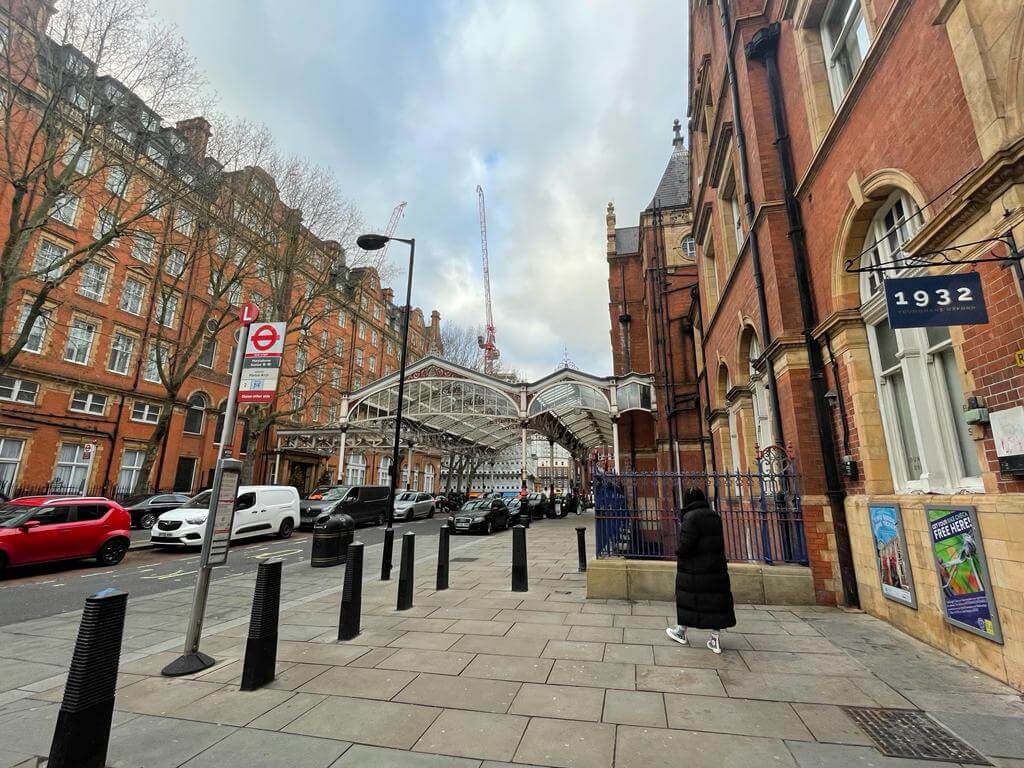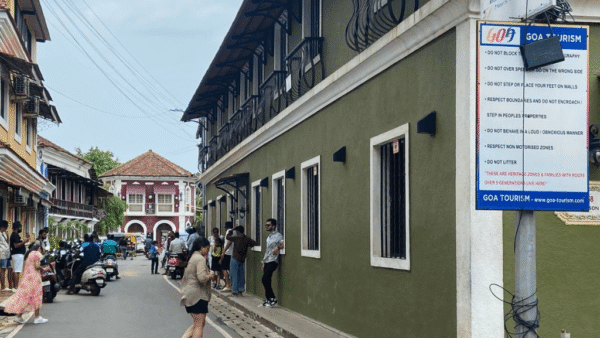An integral part of road design is, or should be, the design and making of the pavement. This has multiple uses – a walkway, a vending zone, a meeting point if there are coffee shops, or just a place to sit and see the cars zip by. At their minimum, pavements are meant to be safe and pleasurable walking spaces for pedestrians as they are separated from vehicular traffic.
Without pavements, roads seem bare, as these lines point out. “It was to make travel easier or safer or more impressive. Our roads were the silver threads that tied our communities together over both distance and time, and the pavements were the fabric that turned those threads into a useful reality.”[1]
Although city and town planning must include pavements, they do not exist or even if they do, they are badly maintained across India’s cities. In the car-centric cities where road design and maintenance are given importance, pavements are usually neglected or barely-used forlorn spaces.
Until recently, pavements in Scotland were used for parking vehicles. Looking at the hassles in walking and to aid better accessibility, especially faced by senior citizens, it banned pavement parking – a significant decision for pedestrians. “Pavement circulation also secured undisturbed, anonymous walking and the ability to maintain a distanced attitude towards others – to be private while in public. Yet pavements featured as a prominent public space not only because it was ordered and controlled, but because urbanites of all sorts fought for access. Next to allegedly “modern” usages, city pavements remained home to age-old but marginalised street practices, as well as middle-class women who had begun to claim their equal right of use.”[2]
Priority to walking and cycling
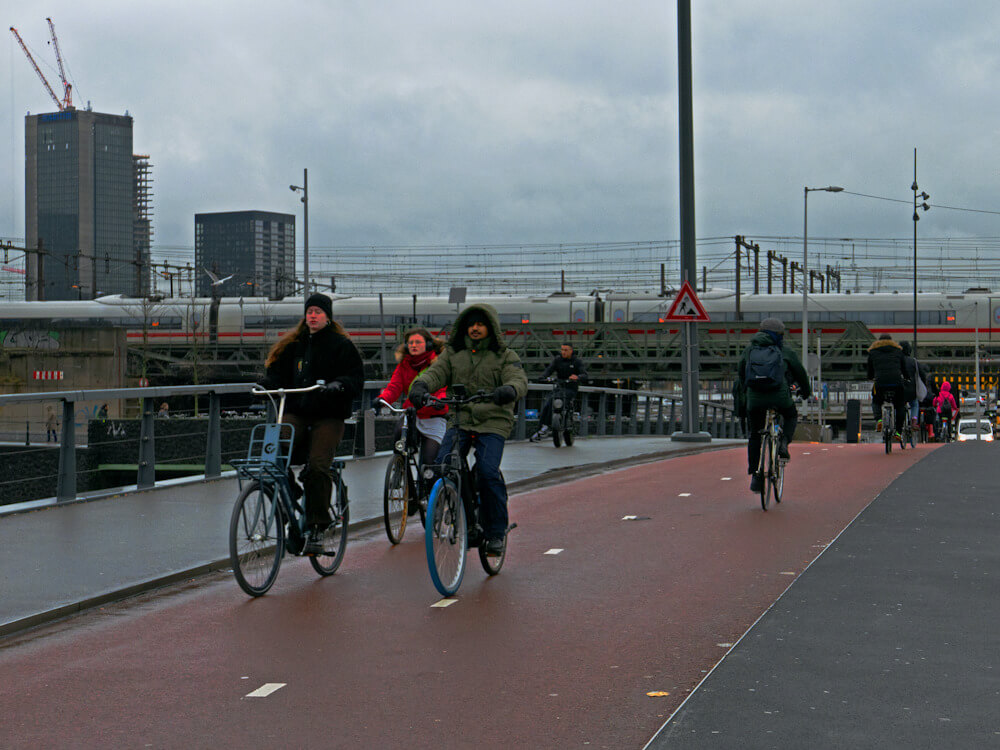
Photo: Wikimedia Commons/ Fons Heijnsbroek
Pavements across the Netherlands, where cycling is a popular mode of commute, have clearly demarcated spaces for cyclists and pedestrians. The urban design of continuous sidewalks, specific to the Netherlands, give priority to pedestrians. It’s a template for other places, which forces vehicle drivers to acknowledge that other users too have the right of way.
Canada has adopted continuous sidewalks and bike paths as a standard design for local street intersections since 2020. On multi-use paths, where people cycle in both directions, the right of way of pedestrians and cyclists is recognised. The design makes it important for cars to slow down where they cross paths with active users, thereby making drivers aware that the roads they are driving on intersect a space where people are walking and cycling. The reduction of car speed acknowledges people’s right to the space.
“As a more people-friendly design, the continuous sidewalk is appropriately named because the sidewalk continues across an intersection without a break in the footpath. On a continuous sidewalk, widely seen across the Netherlands, users do not need to step down onto the roadway to cross. As the name suggests, the footpath continues at the same level through an intersection and onto the next block. This design indicates and re-enforces pedestrian priority, shifting the mindset from a pedestrian entering the roadway to a vehicle entering the pedestrian space. This requires motorists to slow down and pay close attention to other road users as they navigate the space, giving pedestrians a greater sense of comfort and security.”[3]
Amsterdam, the capital of the Netherlands, has found another interesting use for sidewalks. For those yearning for company to share a cuppa can make sidewalks virtually a living room. They simply have to place a bench or some chairs in these outdoor spaces and enjoy the space.
“Sidewalks are those public places where you can coincidentally bump into somebody that, in a big city, turns out to be a remarkable and unusual experience. Why not have more of that? Shaping the sidewalk and public space experience is having a moment among urban designers, urbanists and placemakers. There has been a steady slew of projects trying to maximise encounters among people at public spaces. Surprisingly simple but an effective way to activate sidewalks in cities, the initiative De BuurtBankjes (in English, neighbourhood benches) encourages residents to place a bench outside their homes turning the sidewalk into a living room for the neighbourhood.”[4]
Impressive street art
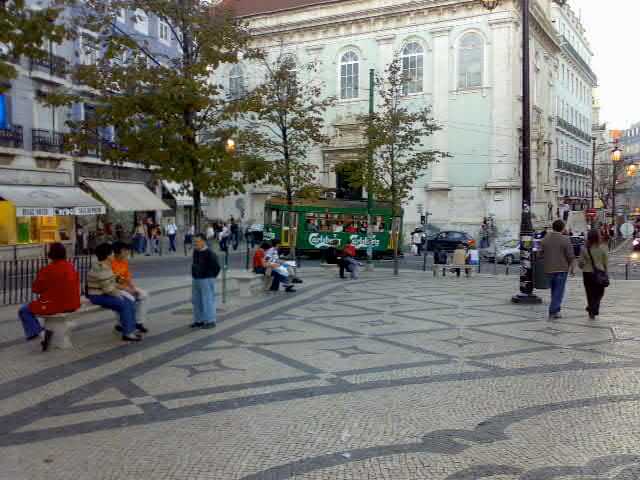
Photo: Wikimedia Commons
The beautiful city of Lisbon, capital of Portugal, has artistic pavements which showcase its history, tradition and immense talent. A plaque in Central Lisbon reads: “Tribute from the city of Lisbon to the Pavers who built the ground we tread.”
Lisbon flaunts its artistic pavements, manually laid block by block. They are carpeted in small pieces of limestone to form striking patterns, some as old as 180 years. “If we look closely we can see, hidden in the middle of the eye-catching designs, diverse images that surprise us every step we take. A bunch of grapes, a bird, a watch, a boat or even a smiling face are some of the curious secrets in the Portuguese pavement that make us stop to admire and wonder about their existence and the men that made them.”[5]
The impressive artwork has been replicated in many cities, including Brazil’s seaside city, Rio de Janeiro. Its famous pavements on beaches are a major landmark of the country and inspired the exhibit, ‘Tatuagens Urbanas e o Imaginário Carioca’ (Urban Tattoos and the Imagination of Cariocas), at the National Historical Museum in 2015. It was held as part of the city’s 460th anniversary celebrations.
“Rio’s Portuguese-paved sidewalks amount to an area of 1,218 square kilometres, one of the world’s most remarkable specimens of the art of limestone pavement. The tradition was introduced by the Portuguese, who spread the technique across major European cities as well as every country they colonised.”[6]
Lima: Hi-tech pavements
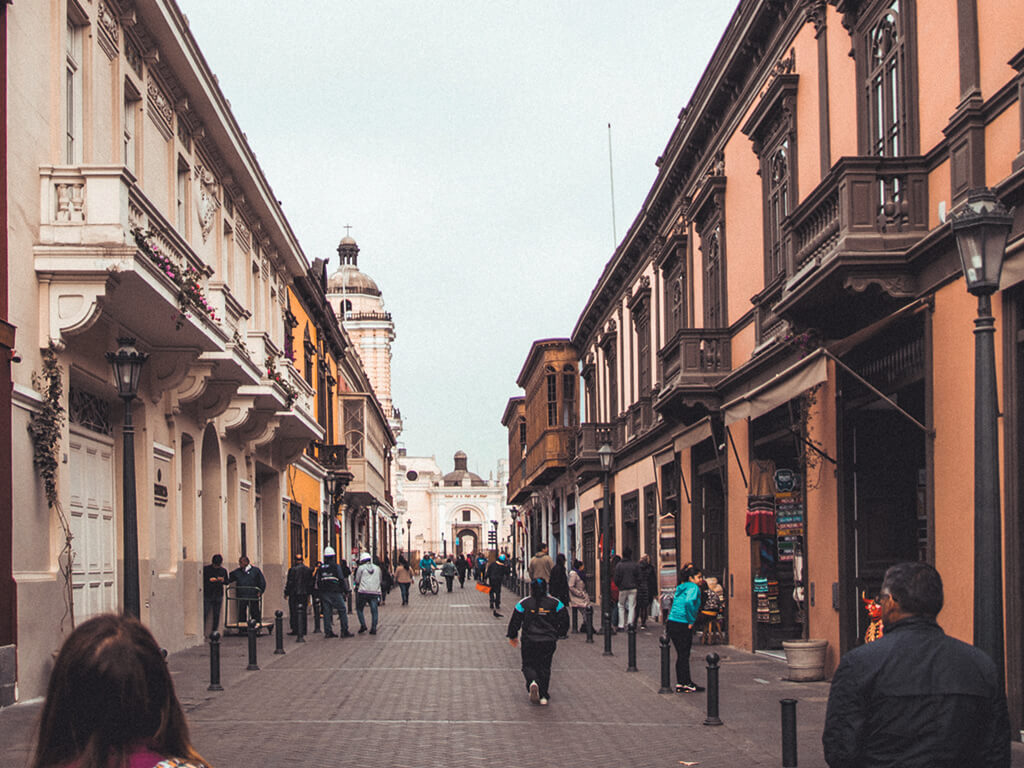
Photo: Adrian Dascal/ Unsplash
Recently, Peru’s capital Lima made pavements more friendly for the visually impaired. A set of cement tiles on pavements with numbered lines can inform the visually impaired the type of shops or facilities — banks, grocery shops, hospitals — they are crossing. It can be a game-changer for millions of visually-impaired pedestrians around the world.
“The initiative introduces tactile tiles along the Peruvian capital’s sidewalks, a simple yet effective system co-created with those it aims to serve—the visually impaired community. These tactile tiles, marked with distinct signs, allow individuals to identify and locate nearby amenities such as eateries, financial institutions, and healthcare facilities. Users can interpret these signs through touch, using their canes to count the lines and navigate the urban terrain.”[7]
The copyright-free initiative encourages other cities to follow suit, making it more accessible to all users.
Zagreb: Leisure spaces
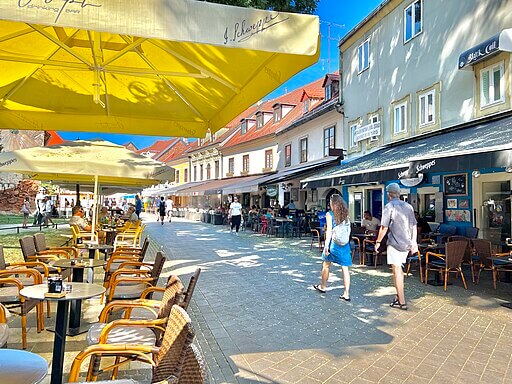
Photo: Sharon Hahn Darlin/ Wikimedia Commons
Croatia’s capital city is among the most walkable in the world and popular for its vibrant café culture. Setting a brilliant example of pavement cafés, the beautiful city is dotted with coffee shops in the public spaces. It’s a common sight to see locals congregating at pavements cafés to watch a football or tennis match on giant screens.
“Zagreb is made for walking… Having coffee in one of Zagreb’s outdoor cafes is a must, involving hours of people-watching, gossiping and soul-searching, unhurried by waiters. To experience the city’s vibrant cafe culture, grab a table on the cobbled car-free Tkalčićeva, with its endless streetside cafes, or one of the pavement tables on Cvjetni Trg or Bogovićeva.”[8]
Cool pavements to curb rising heat
The cool pavement concept calls for surface materials that trap less heat, reflect more solar energy, enhance water percolation and evaporation, or are modified in other ways to remain cooler than conventional pavements. Such pavements reduce stormwater run-offs, increase safety, reduce tire noise, and provide a more comfortable environment. The concept has been catching on in cities around the world given its many benefits.
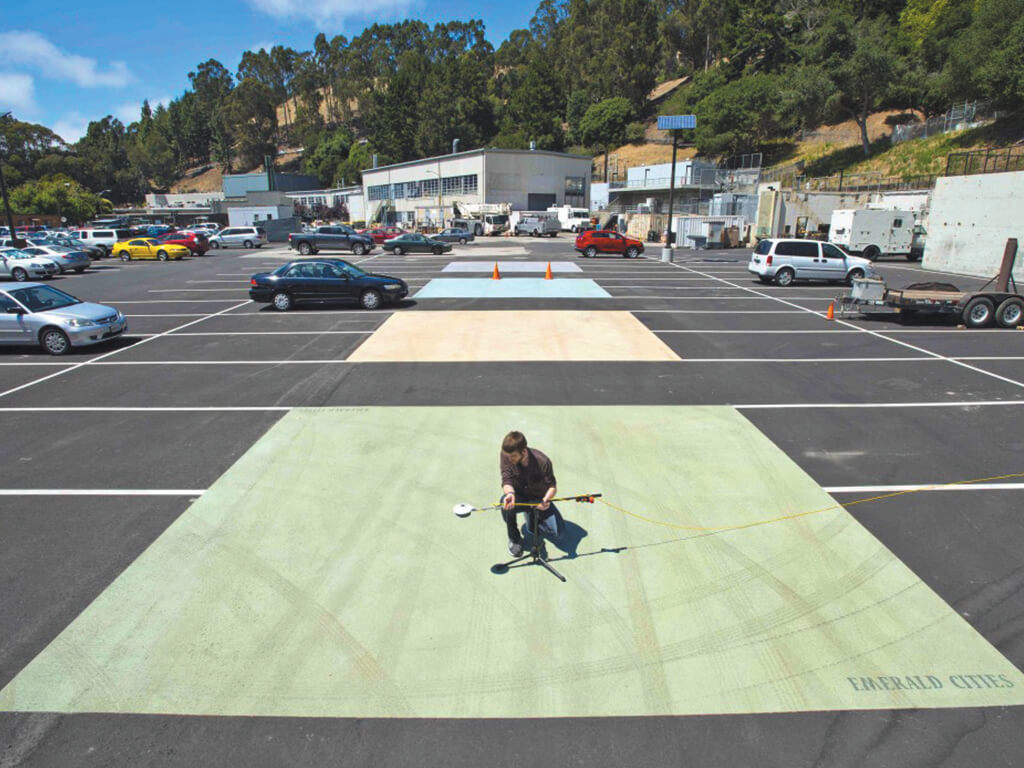
Photo: Berkeley Lab/Flickr
A study found that cool pavements can help mitigate extreme heat and greenhouse gas emissions and “could lower air temperatures in Boston and Phoenix by up to 1.7 degrees Celsius (3 F) and 2.1 C (3.7 F), respectively. They would also reduce greenhouse gas emissions, cutting total emissions by up to 3 percent in Boston and 6 percent in Phoenix. Achieving these savings, however, requires that cool pavement strategies be selected according to the climate, traffic, and building configurations of each neighbourhood”.[9]
“Cool pavements can be created with existing paving technologies (such as asphalt and concrete) as well as newer approaches such as the use of coatings or grass paving. Cool pavement technologies are not as advanced as other heat island mitigation strategies, and there is no official standard or labelling programme to designate cool paving materials.”[10]
Party on pavement
Often pavements in cities are used for different purposes throughout the year – as marketplaces, parking places, pedestrian areas, shopping areas and also an open sitting area during summer. Like it happens in the city of Racine, Wisconsin, in the US.
The annual event, ‘Party on the Pavement’, here transforms 12 blocks into vibrant and energetic spaces of fun activities, music, food, games, shopping and street performances. Attracting a huge crowd of people, including the locals, ‘Party on the Pavement’ is the biggest street festival in Racine.[11]
Paris: Café culture
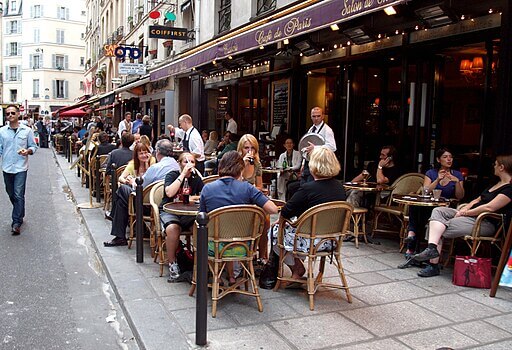
Photo: zoetnet/ Wikimedia Commons
Pavements in Paris host perennial parties. The charm of the city lies in its sidewalk bistros and cafés, which are “the centre of French cultural and social life, serving as meeting places for artists, intellectuals, politicians, and everyday people…These cafés are not just places to grab a quick coffee or meal; they are social hubs where people come to relax, converse, and observe the bustling life of the city.”
These cafés are known worldwide for the charm and romance they bring to a place with their quaint tables and chairs set out on the cobblestone streets, often under large umbrellas to provide shade. Over decades, they have become an important part of the city’s cultural heritage. “Many famous artists and writers, such as Ernest Hemingway and Pablo Picasso, were regulars at Parisian cafés and used them as a place to work and socialise.”[12]
The pavement café culture is also found in Australian cities of Melbourne and Geelong. “Pavement cafes are places of great interaction with the street and improve visibility. In this sense, they help to increase the natural surveillance of streets. Compared to pubs and bars, cafés are able to attract a more diverse age-group of people. Cafes are also places where a great deal of business is transacted, and pavement café culture is perhaps one of the few remedies to the fully privatised public realm. Café culture in Australia and cities such as Melbourne and Geelong has become a part of the city image, specifically for tourism and destination marketing.”[13]
Pavement to parks
The initiative in San Francisco, United States, transforms streets to provide new and accessible spaces for citizens; it transforms spaces for cars into places for people. The Pavement to Parks is an initiative driven by the San Francisco Planning Department, the Department of Public Works, the Municipal Transportation Agency, and non-profit organisations. It is conducted with the active participation of neighbours to give streets another use. The projects are “designed primarily as social spaces that require furnishings, such as tables and chairs, shade, and other amenity features. They are designed to attract people to sit, socialise and recreate”.[14]
The initiative has found resonance. It is “best suited to locations with existing pedestrian activity where parks or other open space may be lacking nearby. They can help to enliven store fronts and retail areas, provide space for farmers’ or artists’ markets, serve as a lunch spot for food trucks, live performances or just provide a space for people to sit outside.”[15]
London’s shared spaces
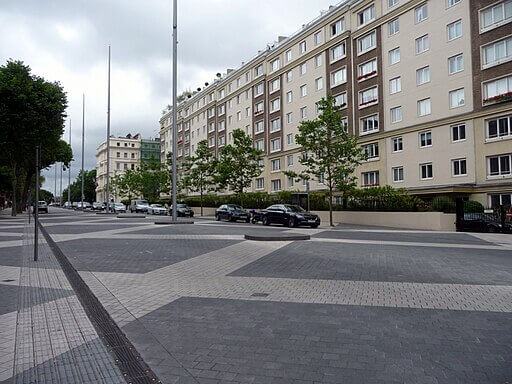
Photo: Christine Mathews/ Wikimedia Commons
London’s walking infrastructure ranks among the best in the world – clearly demarcated pavements, carefully marked intersections with alerts and warnings for pedestrians, areas that are easily accessible even to the physically challenged, and some pavements even sporting aesthetically-placed benches for seating.
However, London has also done an experiment. Labelled as the urban design of the future, it has done away with pavements, kerbs and demarcations on the new Exhibition Road in South Kensington in 2021. Bereft of barriers, bollards and signs, the road – which houses many museums — is shared by vehicles, pedestrians and cyclists. It is one continuous space but pedestrians have to negotiate the traffic.
“The overall effect is of generosity and calm. Crowds can flow more happily over the paving and the route from South Kensington tube to the great museums, which was always a tricky one unless you took a long subway, is now a pleasure. The road is a place where you might want to be, rather than just a means of getting somewhere else. It is not fussy and prescriptive, as public space improvements often are. A particular joy is that there is no pointless public art; it was rightly decided that, with sculptures both outside and inside the museums, there was already enough art to go round.”[16]
Cover photo: London’s neatly laid out pavements make walking in the city enjoyable.

